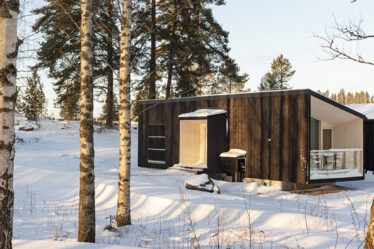
As the globes natural ecological health declines year by year, it becomes apparent that it’s our responsibility to prevent over consumption of dirty gas resources. A solution to this is Solar energy systems, which have been proven to be one of the most efficient renewable energy resource systems in recent years. This is especially the case when it comes to smaller scale residential solutions. If you’re considering making the shift towards green energy, here’s a few handy tips for buying a solar energy system in 2020.
1. Have a realistic budget
Solar systems can be expensive when you’re installing them for the first time. Sure, they save a lot of money and energy in the long run, but the initial costs can be incredibly daunting. While you might find cheap equipment, remember that it can eventually add to your energy bills and maintenance costs in the long run.
2. Get recommendations from your peers
Since closely-knit peer groups are considered to be the most influential, consider getting references and recommendations from friends and relatives to get the best deals for your money. Online forums can reveal a lot of information, but when it comes to something so reliant on local climate, it’s always best to talk to those around you.
What the most accurate information? Pick the brain of your local electrician. This way you can adopt the opinions and preferences of someone who has gone through countless trial and error to improve their solar installation skills and knowledge. Click through here to find an example of a high quality electrician who specializes in solar energy systems. This company is based in Albany, Australia, so be sure to find one who operates in your region.
3. Read up about your solar system options
Recommendations aren’t enough if you don’t know what you’re putting your money into. So, put on your reading glasses and get a brief understanding of what’s the best one for you.
What type of panel do you want; mono-crystalline or polycrystalline? Which solar panel system design is the most suitable for you; string inverter or micro inverter? Ensure that whatever you choose gives you optimum energy efficiency.
4. Don’t forget your geography
Not all solar systems are suitable for your needs. Depending on your location and climatic conditions, you might want to look into the limitations of the options available to you. For instance, mono-crystalline solar systems are great for areas with a good amount of sunlight, but you may want to go for polycrystalline if you live in an area that doesn’t experience uninterrupted sunlight. Do you have lots of trees around your home? You may want to consider a split cell panels to reduce the energy loss associated with shading.
5. Calculate the value it will add to your property
A solar system can increase your property’s value by up to 4%. But be sure that you’ll get the desired resale value on your property. It may not be such a wise investment if your real estate company wants to market your home to a consumer base uninterested in expensive home assets. Solar systems can sometimes seem as a ‘luxury’ asset that only appeal to those within a certain socio-economic group. Be sure your home is within this market so you can gain the resale value.
6. Consider the warranty
A good solar system should offer you 20 to 25 years of manufacturer’s warranty. However, be wary of companies that don’t have a favorable track record because you can’t avail a warranty if that company ceases to exist. The solar manufacturer industry can be very unstable, so by selecting stable brands (such as REC solar, Huawei, Tesla, etc.) you’re guaranteed warranty protection.
7. Find out the incentives you can enjoy
Both residential and commercial consumers can enjoy incentives for installing a solar power system on your property. These tax deductions, installation incentives and tariffs vary from country to country. Depending on your region’s green energy funding, you can get $2,000 – $5,000 off your installation price. This is in combination with the savings you rake in from solar energy tariffs (feeding energy back into the grid).
8. Check the mounting system
This is especially important for properties located in areas that experience extreme climatic conditions such as storms and heavy rainfall. A sturdy mounting system will ensure that your solar system isn’t overthrown by any kind of climatic trauma.
9. Calculate your second year’s costs
The first year’s cost usually comes as a daunting expense. But you can only get the right value for your investment after calculating the cost for the following years. For instance, you can cut down on your energy bills by 30% from the second year onwards.
10. Don’t give in to salespeople

Installing a solar system is a responsible decision, but not choosing the right one for you can hedge you savings. However, at the end of the day you’ll be securing the future health of our planet and those who come after us. We hope you learnt a thing or two from this guide – now it’s time for you to make some calls and ask some questions!
Article Submitted By Community Writer





